As cold weather came in, it stirred hankerings for hotpots like the the ones we had had on our Korea trip. Manok Park had been recommended to us by a friend, and it had been on the list of eateries to visit. COVID dining restrictions threw a bit of a spanner in the works though, as many eateries closed their doors.
As restrictions were eased back, a chilly evening seemed the perfect occasion for a hot stew. After checking that Manok Park would be open, followed the map directions to Underwood Central. We had been to the area a number of times for groceries, and also to eat at Ikkairo Ramen, but had not known that Manok Park was actually in that same complex. It is actually located around the back, in a section that oddly enough, though on the same level as the other shops, you can’t get to without going down and up some stairs..
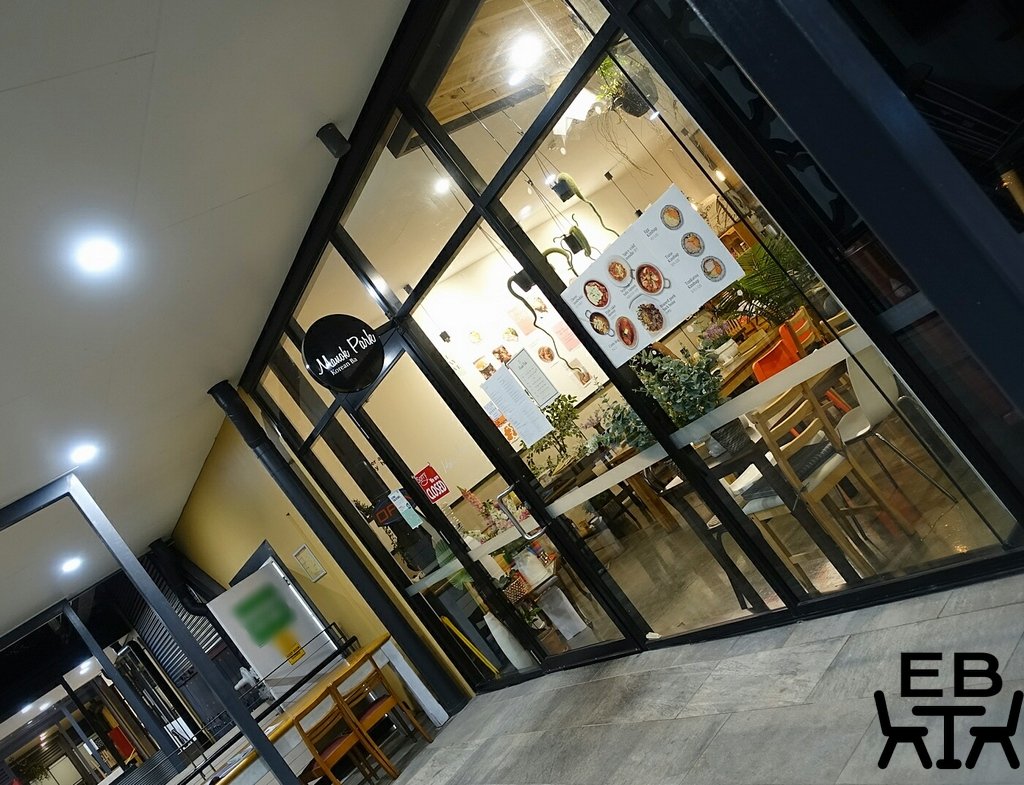
We had initially intended to get dishes to takeaway, but they had capacity for dine-in guests, and we figured that the food would be better eaten there. We were invited to sit at any available table we liked, as only one other was occupied at the time. Menus were brought to us, and there were pictures of some of their dishes on the wall. The dishes were, of course, Korean cuisine, but there were also some western-influenced dishes, like loco moco (which is Hawaiian). We had already predecided on a couple of items from the menu that we thought would travel well for takeaway, but as we were going to eat in, we added a couple more. We ended up ordering their Gojuchang chicken, Seafood tofu ramen, and Beef tartare bibimbap.

The customary korean side dishes were brought out to us soon after. There was kimchi, naturally, and pickled cucumber. These were served in small floral-printed dishes, and accompanied by pink flower-shaped side plates. These quaint touches tied in with the decor, which had that gentle European country cafe style. This was a common decor theme we saw in our travels in South Korea. There was an eclectic mix of wooden tables and chairs that weren’t quite the same, but matched. Wooden cupboards served as the divider between the dining area and the service section. They also doubled as functional storage for glasses and crockery. There was plenty of greenery around, and scattered cute ornaments. Easy listening music played over the speakers at a comfortable volume, a mix of Korean pop ballads and more jazzy tunes.

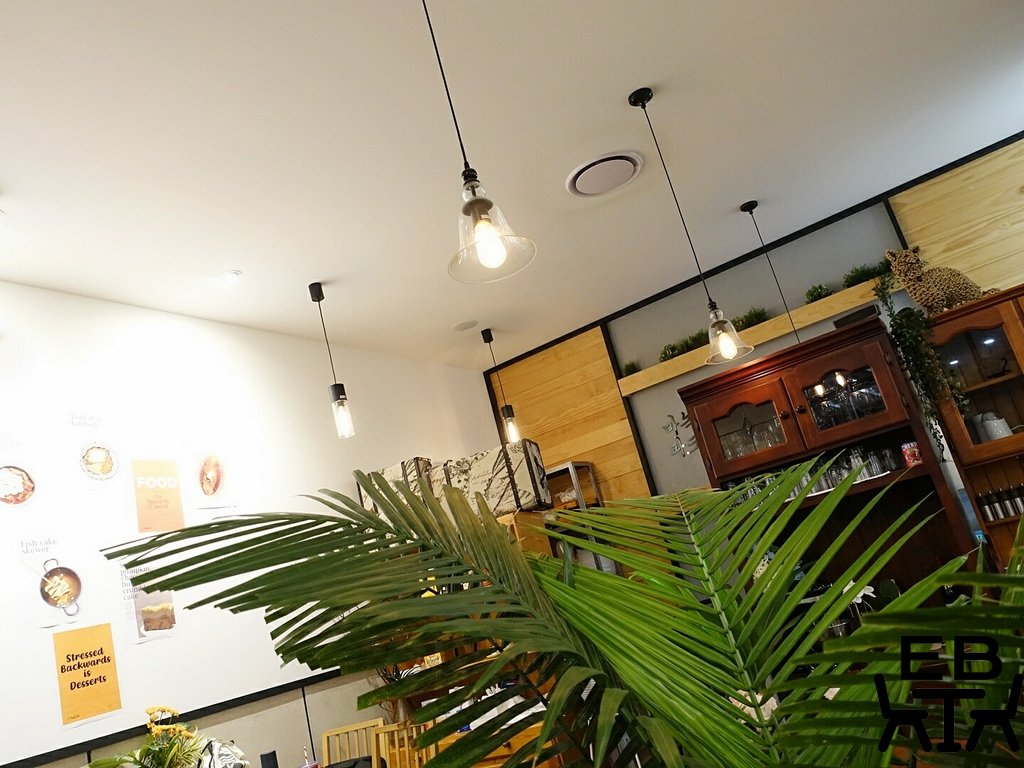
The kimchi was tangy and spicy, and there was a good crunch to the cabbage leaves.The cucumber pickle also had strong flavours, a punchy sweet and sour mix. They certainly whet the appetite.
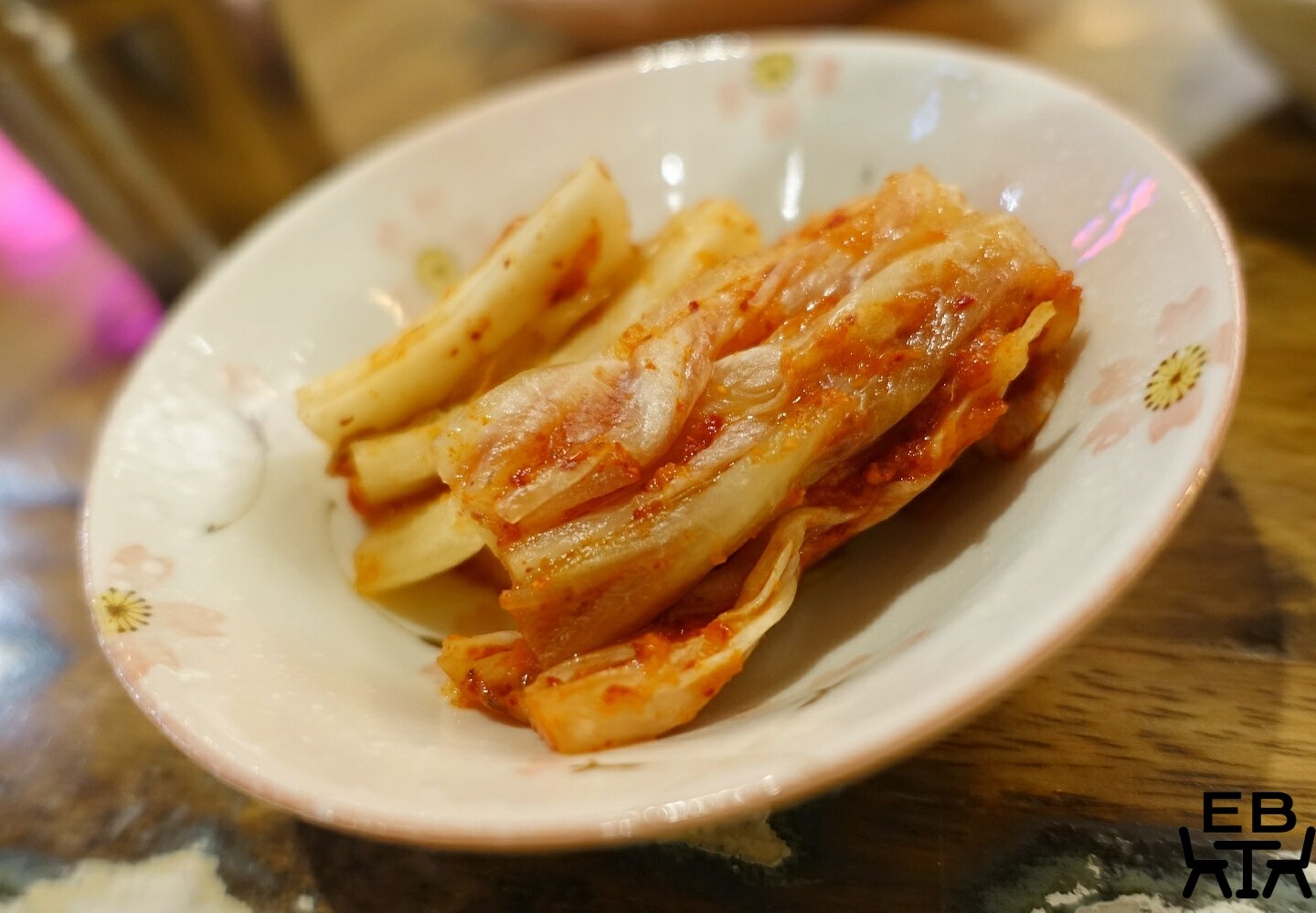

There has been increasing awareness of how tasty Korean Fried Chicken is (the other KFC) as Korean eateries have become more widespread in both Melbourne and Brisbane. Can you say you have really tested out a Korean eatery if you have not tried their Korean Fried Chicken? The Gojuchang chicken was listed in the Manok Park menu as having glutinous rice flour batter, gojuchang aioli, maple syrup, and nori furikake. Of course we had to have it. It was served in a grey speckled stoneware dish, the golden-brown batter-coated strips of boneless chicken striped with orange gojuchang mayo. It looked promisingly delicious, and it delivered. The batter had a good crunch, and wasn’t oily at all. The meat was moist and juicy, and it was all well-seasoned. For those who haven’t had gojuchang before, it is a great hit of flavour. Mixing gojuchang with the mayo dialed the heat down, so that it was warming, without being too fiery. The maple syrup may have been mixed in, because the chicken certainly wasn’t swimming in it, but the sauce was spicy, tangy, salty, and sweet. It was a moreish combination, and we could have had many more plates of it.

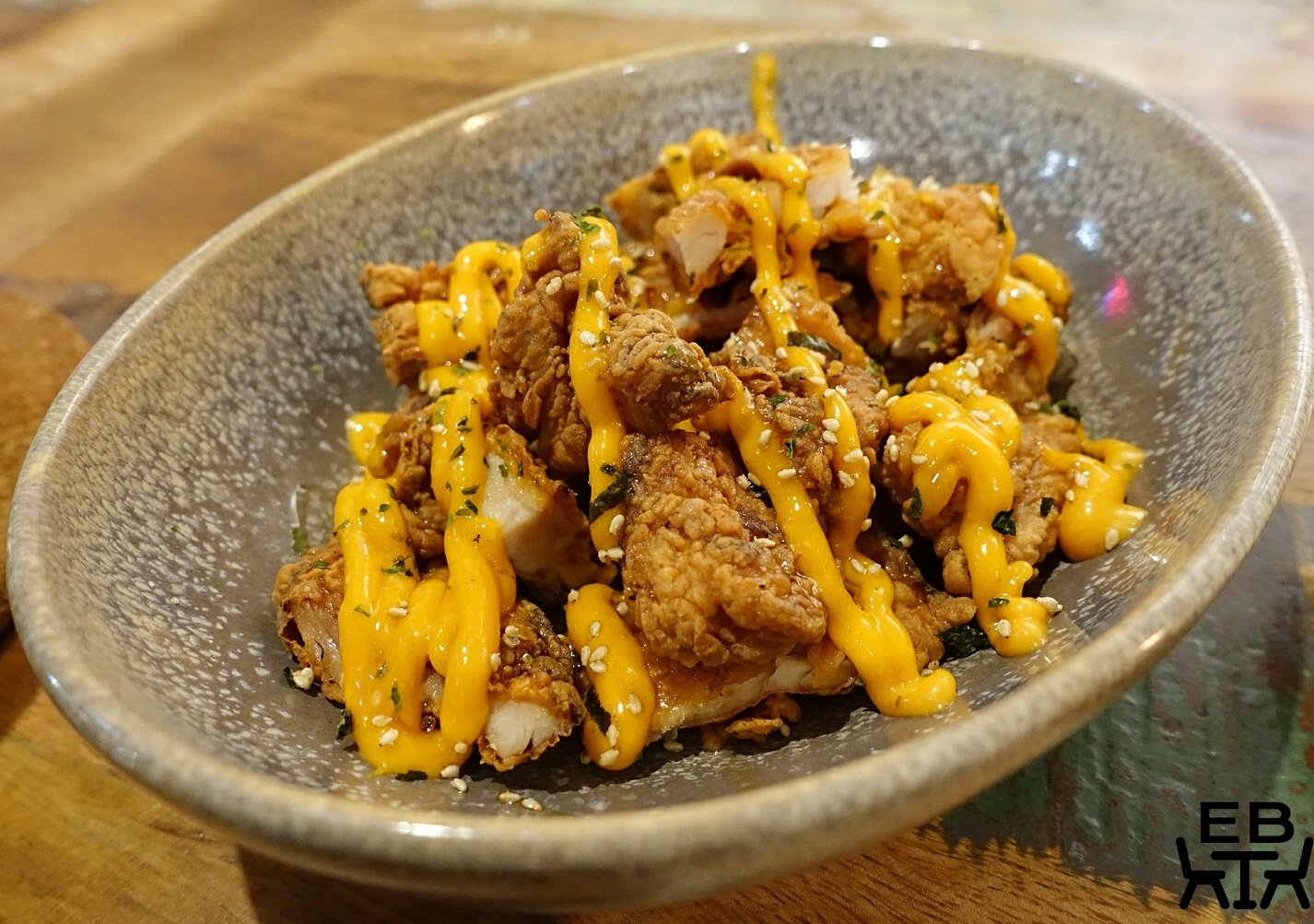

The Seafood tofu ramen was the next dish brought to the table. We hadn’t planned to get it when we were just going to get takeaway, but once we had decided to eat at the restaurant, the picture of the seafood tofu ramen on the wall looked like just the thing to have on a wintery night. It was presented just as it looked in the picture, ingredients bathed in a fiery red soup, served in a golden pot with carrying handles. It was placed on a trivet on the table, and staff warned us that the pot was still hot. A cloud of steam rose from it as we stirred the soup to mix it, making some of the photo-taking a bit challenging. The noodles were springy and curly, and held the soup well. The broth itself was hearty, but not fishy, despite it being called a seafood ramen. It certainly had spice, which was a good hit of heat for the weather. Having it with the other ingredients tempered the fire a bit. In the mix were pieces of crab and small clams. There were also pieces of soft tofu that broke up as we stirred and scooped. We found it a satisfying dish, but would not advise wearing a white shirt when eating it..
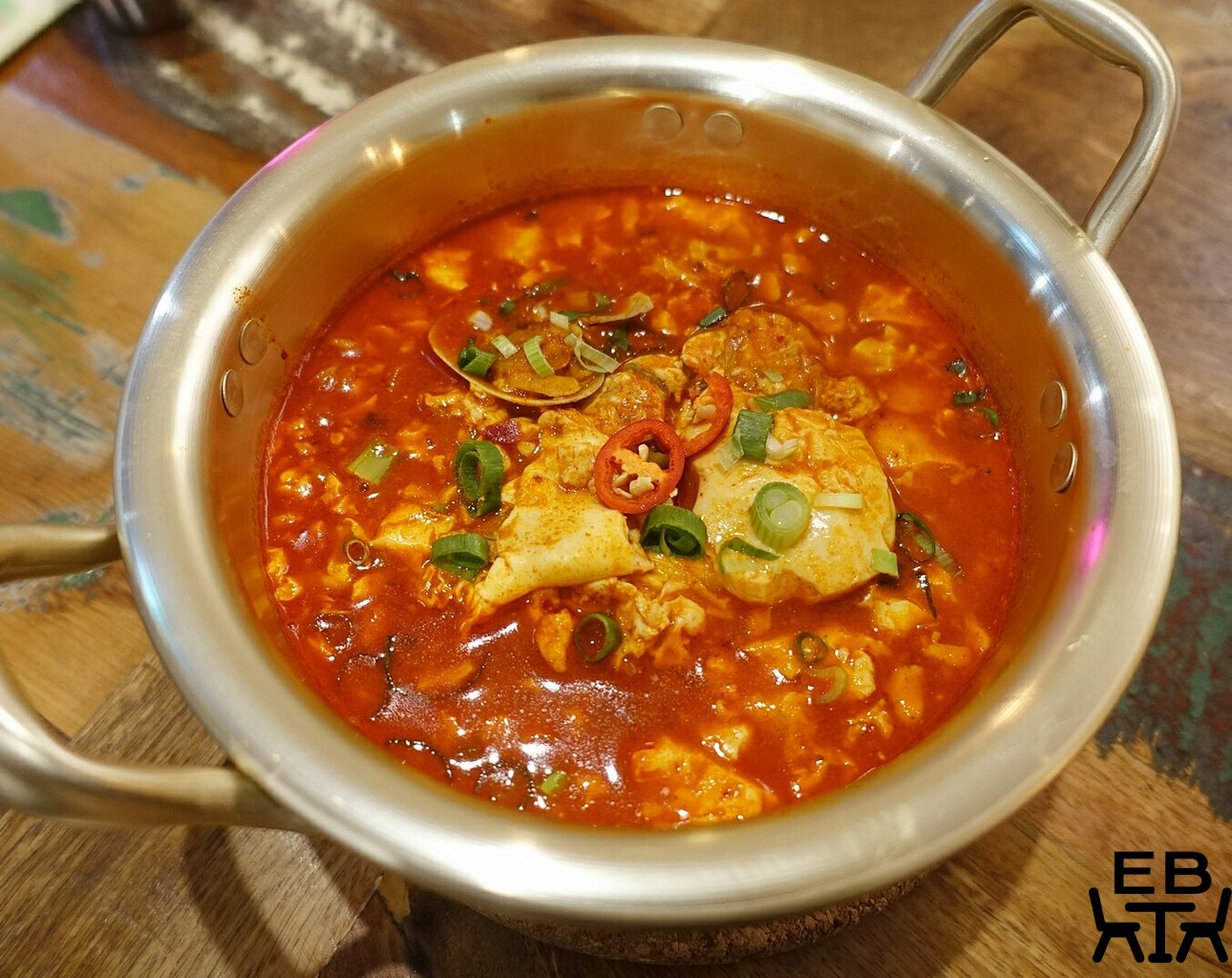

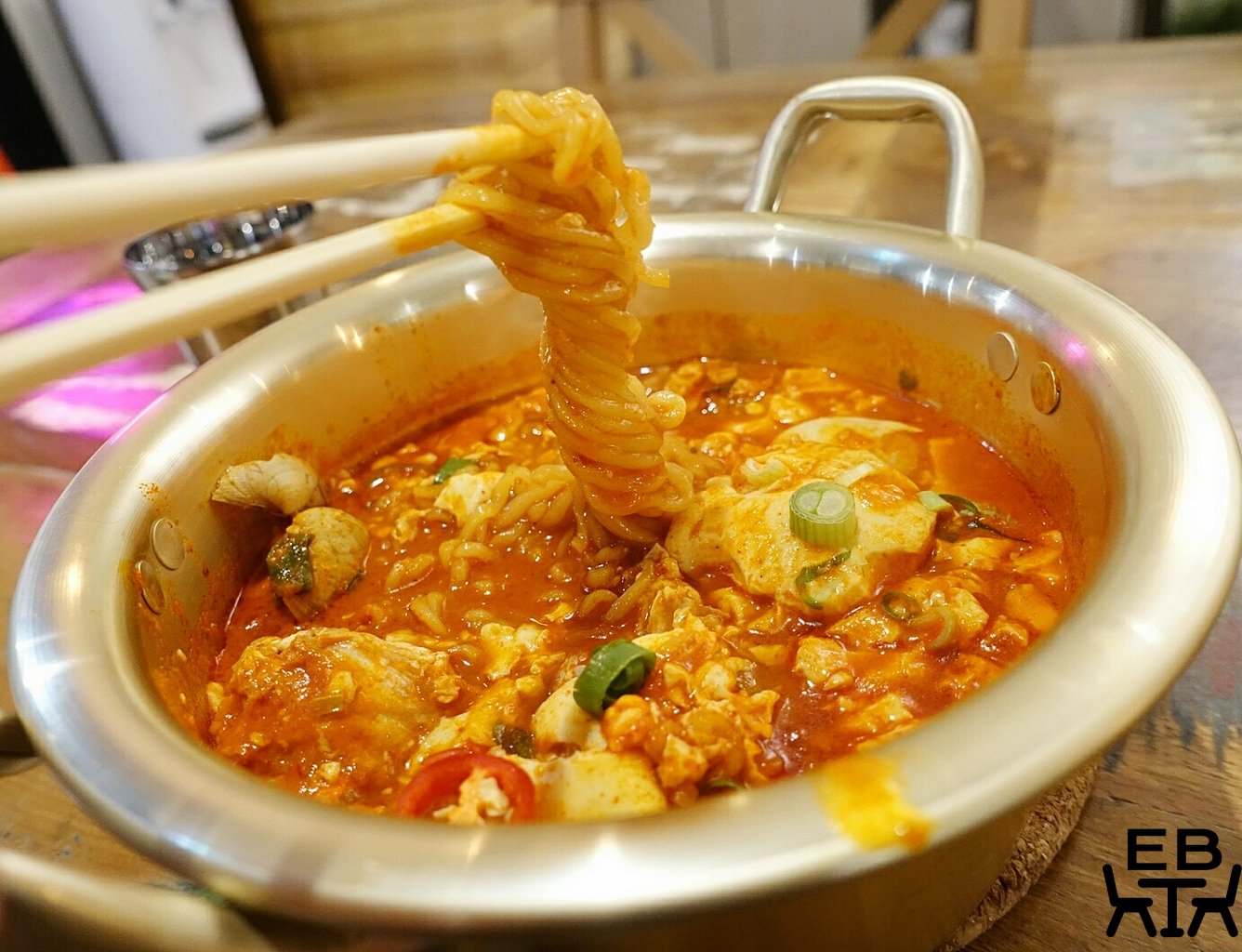
The Wagyu tartare bibimbap was listed as having beef tartare, mushroom, radish, cucumber, egg, and rice. Bibimbap is a very typical Korean dish, but there are also many varieties of it. These components were tidily arranged to begin with, their contrasting colours set off well by the blue hue of the bowl. We mixed it all together to get the gojuchang and sesame oil evenly distributed through. These imparted tomatoey, peppery, nutty flavours, but without fiery heat (which was fortunate, because we already had enough of that from the ramen). The beef strips were tender, but we did find that the slender strips needed to be cut so that they were properly separated. It was a challenge to cut them with the disposable chopsticks and plastic spoons (the only utensils available at our table due to COVID restrictions). The sliced cucumber was crunchy, and the black fungus slices provided a different, crisper crunch. The combination of components gave a good variety of textures in each bite.





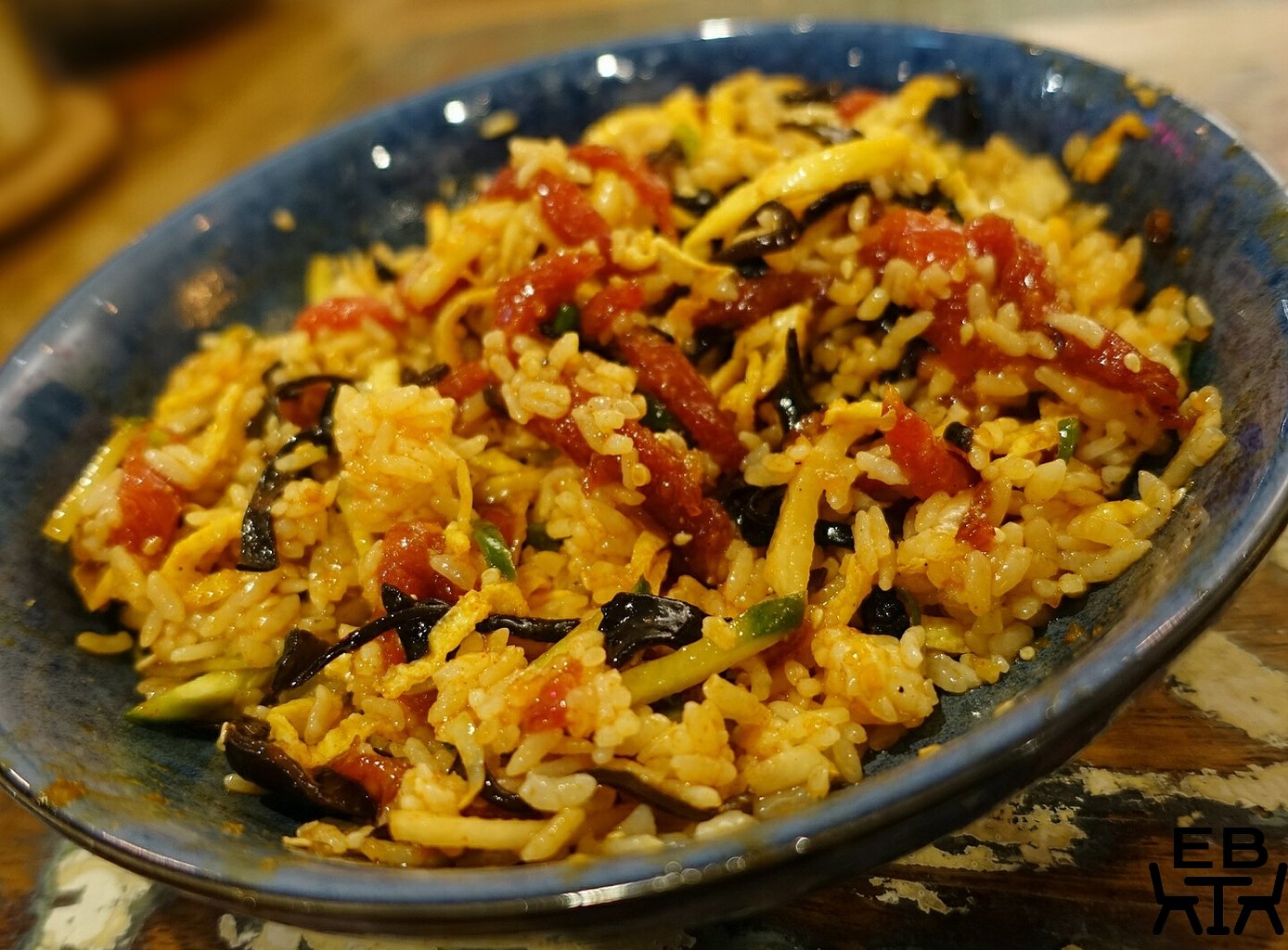
These dishes were quite filling, but the Mochi waffle picture on the wall had tempted us from the very start, when we were ordering the savoury dishes. We were curious about how it would be different from a standard waffle, and decided that there was indeed room for dessert. It was listed as having mochi, walnut, brown sugar, vanilla ice cream, and injeolmi powder. Waffles are too often disappointingly oversold, and in some instances you actually get just half a waffle in your serving. In this case, we were pleasantly surprised to have actually a bit more than one waffle delivered on the plate. The waffle was like a graphic gradient of colour, going from light beige in one corner to progressively more burnished at the opposite corner, and spilling over at the edges, without actually being burnt. Sitting atop this was the scoop of ice cream, and the injeolmi (rice flour) powder was dusted over it all. The waffle had a deep grid. The tops of the waffles, or the wall parts of the grid, were airy and crisp. In the middle of it though, was soft, chewy mochi that stretched as you cut and pulled it. It was quite a unique combination of textures. The injeolmi powder imparted a nutty flavour, The waffle itself was mildly sweet, and the vanilla flavoured ice cream added more sweetness. Hidden underneath the ice cream, we found chopped walnuts that give it all more crunch. The combination had echoes of breakfast cereal in its roasted nutty, malty flavours, and was a comfortable, homey finish to the meal.




All in all, we enjoyed our meal at Manok Park. They delivered authentic Korean flavours in their dishes, with good variety and range within their compact menu. It is a pleasant, cosy environment as well, and certainly a place worth visiting and revisiting.

Scores:
Food: 3.5/4
Setting: 1.5/2
Service: 1.5/2
Total: 6.5/8
Price point: The dishes we had were $16 to $18 each.
Value: Good.
Details:
Address: Shop 18, 15 Kingston Road, Underwood Central, Underwood Road, Underwood
Phone: 07 3341 5592
Website: Manok Park
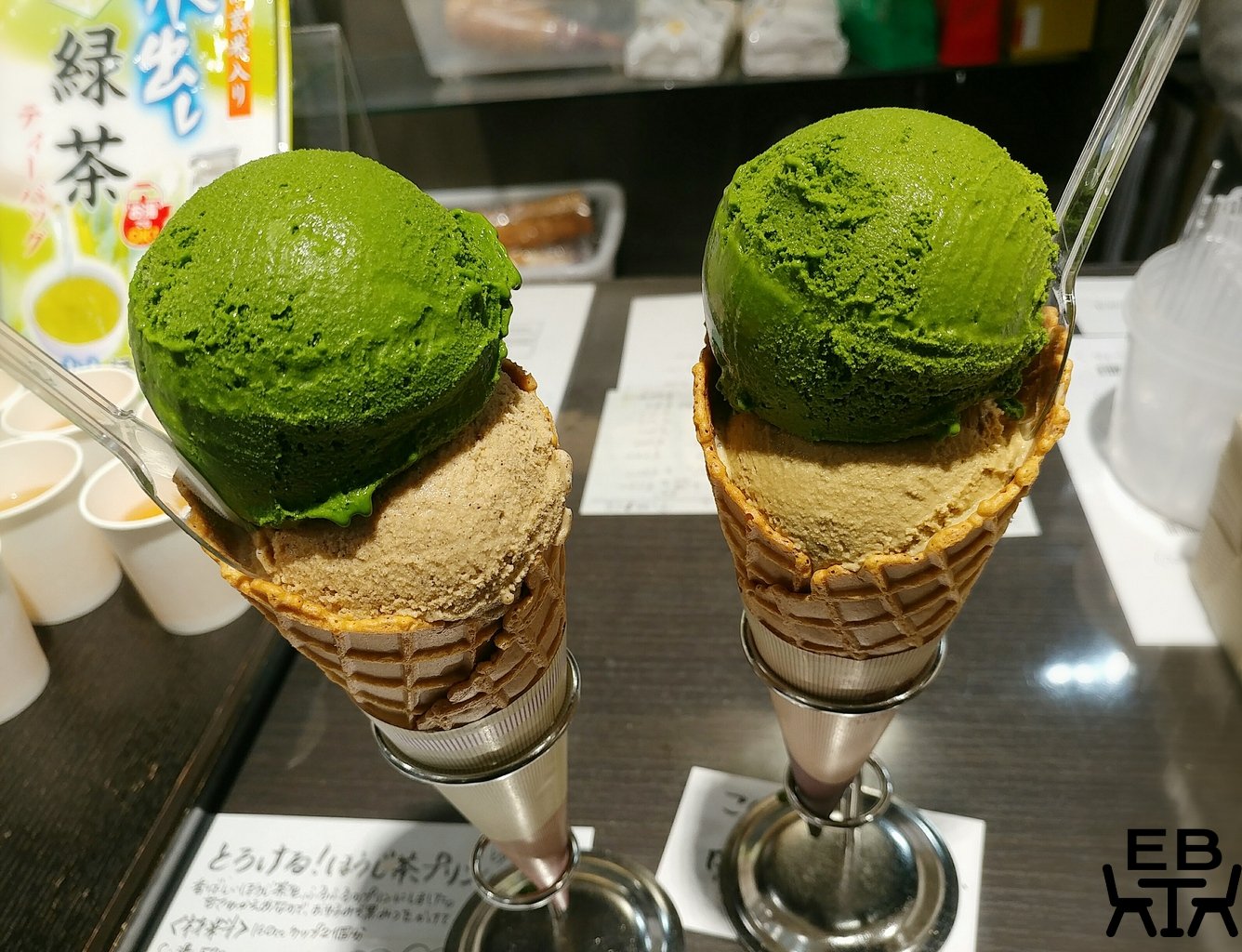
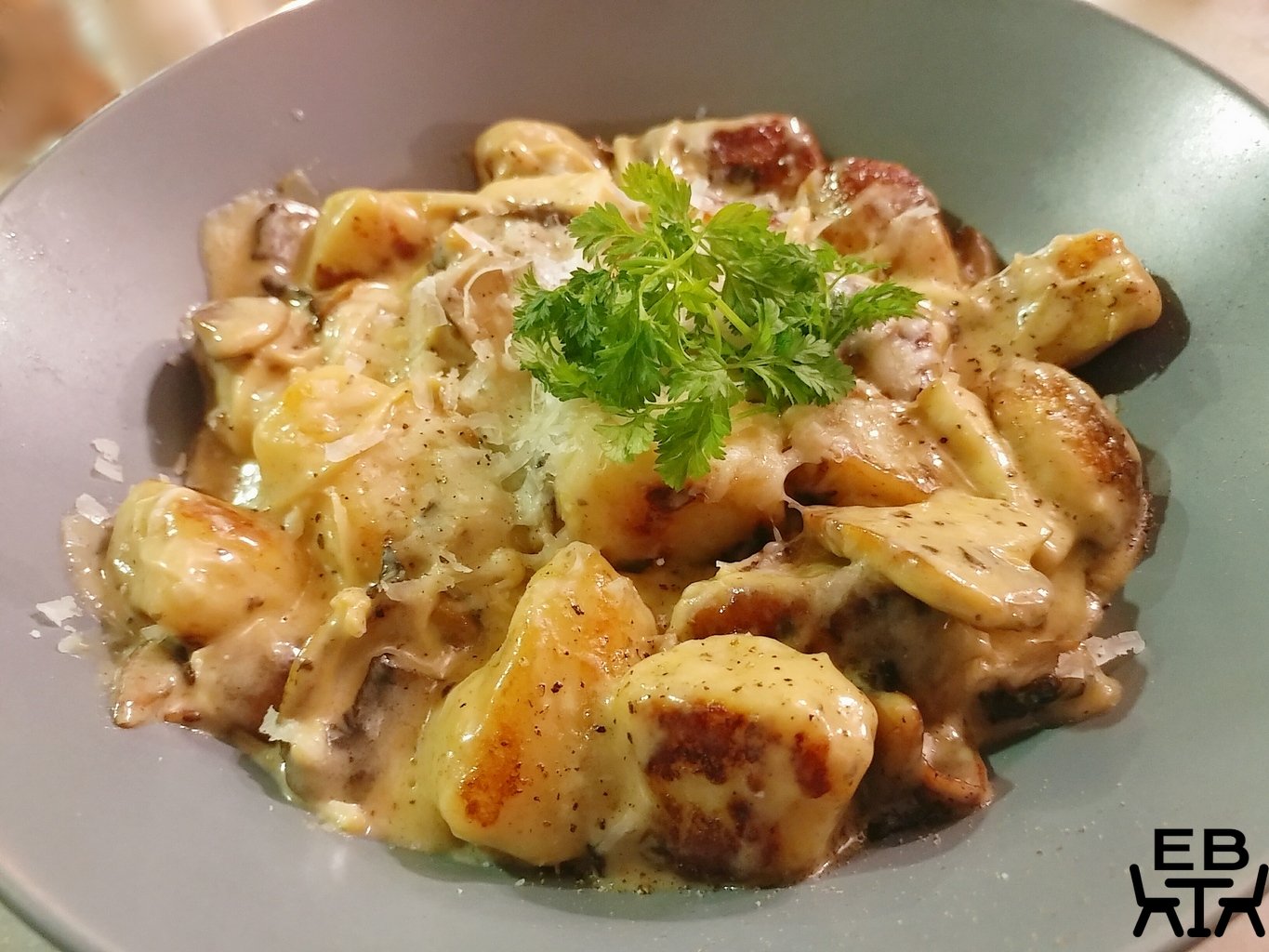






Great review thank you, my only quirky criticism is that you locate it in Brisbane or South Brisbane when its in Logan. So 10 out of 10 for food review but work on the geography lol.
Duly noted, but rather than divide things into lots of separate suburbs (which would have an unwieldy number of subcategories), the decision was made just to divide things into north of the river and south of the river (ish). Much like anywhere in Melbourne has just been categorised as “Melbourne”, rather than separating out into individual suburbs.. There is also the Eats Map function to help people locate places better though.
Glad that you’ve found the reviews helpful otherwise!